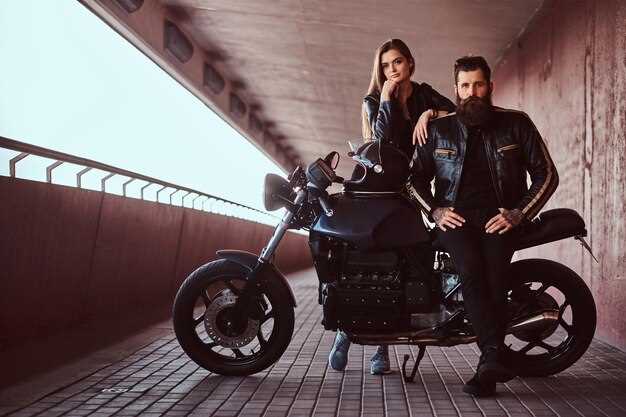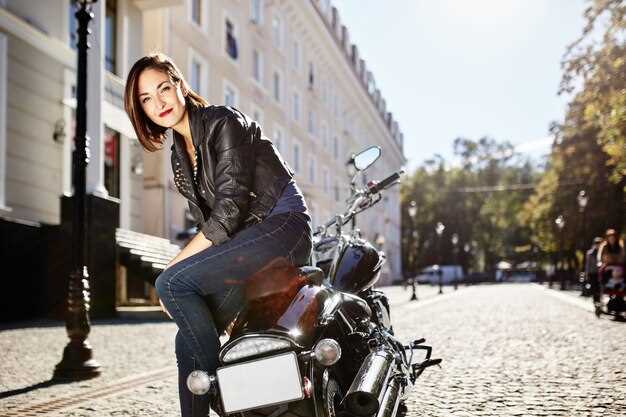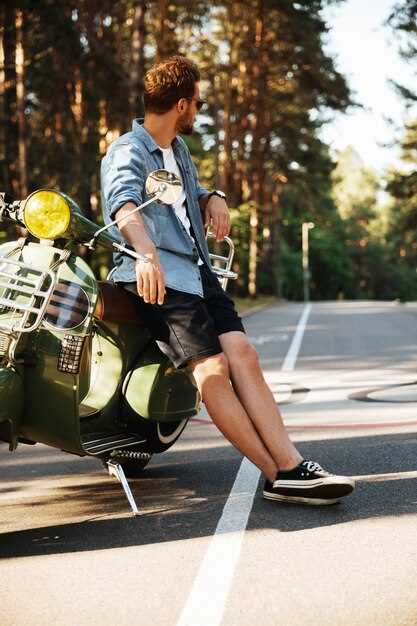

Motorcycles have long been more than just a mode of transportation; they represent a lifestyle, an attitude, and an avenue for self-expression. The deep connection between motorcycling culture and fashion has shaped countless trends over the decades, influencing not only the way riders dress but also the broader fashion landscape. From the rugged charisma of leather jackets to the sleek lines of modern riding gear, motorcycles have left an indelible mark on style and aesthetics.
As motorcycles gained popularity in the mid-20th century, particularly in post-war America and Europe, the associated fashion began to evolve. Influential figures such as Marlon Brando and James Dean epitomized the rebellious spirit of motorcycling, reflecting a growing cultural movement that embraced freedom and individuality. Their iconic looks, characterized by leather jackets, boots, and aviator sunglasses, transcended the motorcycle community and seeped into mainstream fashion, becoming symbols of youth rebellion and nonconformity.
The impact of motorcycles on fashion didn’t stop at individual style; it also inspired major trends in apparel design. High-end designers have tapped into the allure of the biker aesthetic, leading to the integration of elements such as distressed denim, graphic tees, and military-inspired details into their collections. This mingling of utility and style not only celebrates the motorcycle lifestyle but also emphasizes the versatility and rugged appeal that resonates with a diverse audience.
In today’s world, the resurgence of vintage and retro fashion continues to be influenced by motorcycle culture. The romanticized notion of the open road and the aesthetic of bygone eras drive brands to revive iconic motifs that were once defined by the biker community. Thus, the relationship between motorcycles and fashion remains a dynamic interplay that evolves but never fades, continually shaping contemporary style and providing a canvas for personal expression.
The Rise of Motorcycle-Inspired Apparel in Mainstream Fashion
In recent years, motorcycle-inspired apparel has surged in popularity within mainstream fashion, transcending its traditional associations with biker culture. This trend highlights a growing fascination with the rugged aesthetic and utilitarian functionality provided by motorcycle clothing.
Several factors have contributed to the rise of motorcycle-inspired fashion:
- Cultural Influence: The romanticized image of the rebellious biker, often portrayed in films and television, has captured the imagination of the public. Iconic figures like Marlon Brando in “The Wild One” and modern stars such as Keanu Reeves have elevated motorcycle culture into a symbol of freedom and individuality.
- Streetwear Incorporation: Renowned streetwear brands have embraced motorcycle aesthetics, integrating leather jackets, riding boots, and graphic tees into their collections. This blend of styles has made motorcycle-inspired apparel accessible to a younger audience.
- Utility and Durability: As consumers increasingly seek functional fashion, motorcycle gear’s durability and practicality appeal to those wanting versatile pieces that can withstand varied environments.
- Fashion Collaborations: Leading fashion houses and emerging designers have begun to collaborate with motorcycle brands, creating limited-edition lines that combine high fashion with performance wear. These partnerships have boosted visibility and prestige for motorcycle apparel.
Key pieces that exemplify this trend include:
- Leather Jackets: Timeless staples that embody the spirit of rebellion, often featuring unique detailing such as studs or patches.
- Riding Boots: Sturdy and stylish footwear that offer both comfort and protection, appealing to both bikers and fashion enthusiasts.
- Graphic Tees: T-shirts featuring vintage motorcycle graphics or logos, blending casual wear with themed aesthetics.
- Utility Accessories: Items such as bandanas, gloves, and tool bags that add a rugged touch to everyday outfits.
As the lines between functional clothing and fashion continue to blur, motorcycle-inspired apparel is likely to persist as a prominent trend. Its ability to convey a bold personality while offering practicality is a winning combination in today’s style landscape.
The Role of Iconic Motorcycle Brands in Shaping Style Statements

Throughout the decades, iconic motorcycle brands have transcended the realm of transportation, becoming significant influencers in the world of fashion and style. Companies such as Harley-Davidson, Ducati, and BMW have cultivated unique identities that resonate with lifestyle choices and cultural movements, establishing themselves as symbols of rebellion, freedom, and individuality.
Harley-Davidson, perhaps the most emblematic motorcycle brand, has become synonymous with the rugged, open-road aesthetic. Its riders often don leather jackets, bandanas, and rugged denim, creating a signature look associated with the brand’s ethos of independence. This style permeates popular culture, appearing in films, music, and streetwear, thereby cementing its status as an enduring style statement.
Ducati presents a different narrative with its focus on Italian craftsmanship and high-performance engineering. The brand appeals to a fashion-savvy audience that appreciates sleek design and sportiness. Ducati riders often embody a sophisticated yet edgy style, often incorporating tailored elements and contemporary fashion pieces that reflect the motorcycle’s premium identity. This duality between performance and style positions Ducati as a significant player in luxury fashion statements.
BMW motorcycles, known for their advanced technology and comfort, have also shaped modern style trends. The brand caters to a more adventurous and urban aesthetic, attracting a demographic that values practicality without sacrificing sophistication. The layering of functional attire with stylish accessories has become a common trend among BMW enthusiasts, influencing urban street fashion across various demographics.
Additionally, collaborations between motorcycle brands and fashion designers have produced exclusive apparel lines that merge aesthetics with functionality. These partnerships often draw on the heritage of the motorcycle brand while incorporating contemporary fashion trends, further solidifying the role of these brands in style evolution.
In summary, iconic motorcycle brands have not only redefined transportation but have also established themselves as powerful players in the fashion realm. Through distinct stylistic expressions and strategic cultural placements, they continue to inspire trends that resonate far beyond the motorcycle community, leaving an indelible mark on global fashion narratives.
How Motorcycle Subcultures Influence Modern Streetwear

Motorcycle subcultures have profoundly shaped modern streetwear, intertwining rebellious aesthetics with functionality. Originating from the early 20th century, these cultures emphasized individuality and a sense of community, fostering styles that reflect freedom and adventure. This ethos resonates in contemporary streetwear, which often draws from the rugged, utilitarian designs found in motorcycle apparel.
One significant influence is the adoption of leather jackets, a staple in both motorcycle culture and streetwear. Brands have embraced distressed leather, asymmetrical zippers, and bold patches that symbolize personal expression and affiliation. This rugged material not only signifies toughness but also conveys a sense of style that aligns with urban life, making it a favored choice among streetwear enthusiasts.
Another key impact involves the incorporation of technical fabrics that prioritize comfort and durability. Motorcycle gear often features advanced materials designed for protection, which have been reimagined in streetwear. Breathable, waterproof, and abrasion-resistant textiles are increasingly popular, reflecting a demand for performance-oriented clothing that withstands urban environments.
The aesthetic of motorcycle culture also champions a mix of vintage and contemporary styles, creating an ever-evolving narrative in streetwear. From classic café racer looks to modern custom builds, this blend encourages exploration of retro elements, resulting in graphic tees, oversized fits, and accessories that pay homage to the past while remaining relevant today.
Culture-specific elements such as insignias, logos, and customized designs further influence streetwear collections. These details often carry personal significance or cultural references, allowing wearers to connect with a larger narrative. The storytelling aspect of motorcycle subcultures enhances the appeal of streetwear, appealing to individuals seeking to express their own unique identities.
Furthermore, the community aspect of motorcycle culture promotes collaboration between various brands and designers, leading to limited edition releases and exclusive collections. This collaborative spirit fosters innovation and creativity within streetwear, pushing boundaries and encouraging new interpretations of classic styles.
In conclusion, the influence of motorcycle subcultures on modern streetwear is evident in the blending of aesthetics, materials, and community values. As these two worlds continue to intersect, streetwear evolves, drawing inspiration from the spirit of rebellion and individuality that defines the motorcycle lifestyle.






